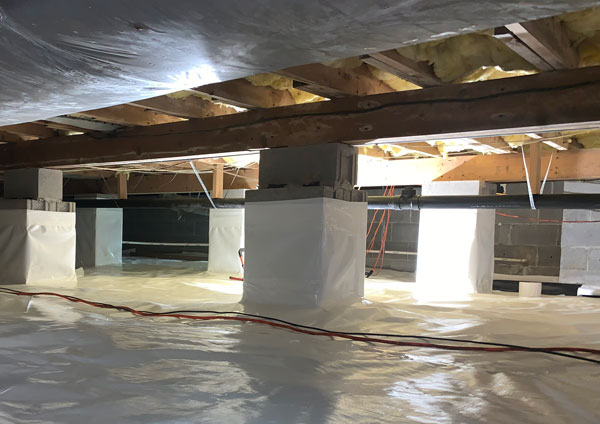
Will Vapor Barriers Keep your Basement Dry?
A dry basement is crucial for maintaining the structural integrity and livability of a home. Moisture infiltration can lead to a host of problems, including mold growth, wood rot, and foundation damage. To combat this, homeowners often turn to various solutions, one of which is the installation of vapor barriers. But do vapor barriers truly keep basements dry? Let’s delve into the science behind vapor barriers and their effectiveness in moisture prevention.
Understanding Vapor Barriers:
Vapor barriers are materials designed to impede the transmission of moisture through walls, floors, and ceilings. They typically consist of plastic or foil sheets installed on the warm side of a surface, acting as a barrier against water vapor diffusion. The primary goal is to prevent moisture from entering the building envelope and causing damage.
Types of Vapor Barriers:
- Polyethylene Sheets: These are among the most common types of vapor barriers, typically installed during construction between the concrete foundation walls and the interior living space.
- Foil-Faced Insulation: Foil-faced insulation boards can also serve as effective vapor barriers when properly installed with sealed joints.
- Paint-On Vapor Barriers: Some liquid-applied products claim to function as vapor barriers when painted onto surfaces like concrete walls.
Do Vapor Barriers Keep Basements Dry?
While vapor barriers play a role in moisture management, their effectiveness in keeping basements dry is subject to various factors:
- Location: The effectiveness of vapor barriers can vary depending on the climate and geographical location. In regions with high humidity levels, vapor barriers may be more critical in preventing moisture infiltration.
- Installation Quality: Proper installation is crucial for the effectiveness of vapor barriers. Any gaps, tears, or unsealed seams can compromise their ability to block moisture.
- Building Materials: The type of construction materials used in the basement walls and floors can influence the need for and effectiveness of vapor barriers. Older homes may have different building practices compared to newer constructions.
- Interior Conditions: Interior humidity levels and ventilation also impact the performance of vapor barriers. Inadequate ventilation or high humidity levels within the basement can lead to condensation issues behind the vapor barrier, negating its effectiveness.
Alternative Moisture Management Strategies:
While vapor barriers can be part of a comprehensive moisture management plan for basements, they are not a standalone solution. Homeowners should consider implementing additional strategies to keep their basements dry:
- Proper Drainage: Ensure that gutters, downspouts, and grading around the foundation direct water away from the home.
- Waterproofing: Apply waterproof coatings or sealants to basement walls and floors to create an additional barrier against moisture infiltration.
- Ventilation: Install adequate ventilation systems, such as exhaust fans or dehumidifiers, to control indoor humidity levels and prevent condensation.
- Foundation Maintenance: Regularly inspect and repair any cracks or gaps in the foundation to prevent water seepage.
While vapor barriers can contribute to moisture prevention in basements, their effectiveness depends on various factors, including location, installation quality, and interior conditions. Homeowners should view vapor barriers as part of a broader moisture management strategy and consider implementing additional measures to keep their basements dry and structurally sound. Consulting with a qualified professional can help determine the most appropriate solutions for individual basement moisture issues.